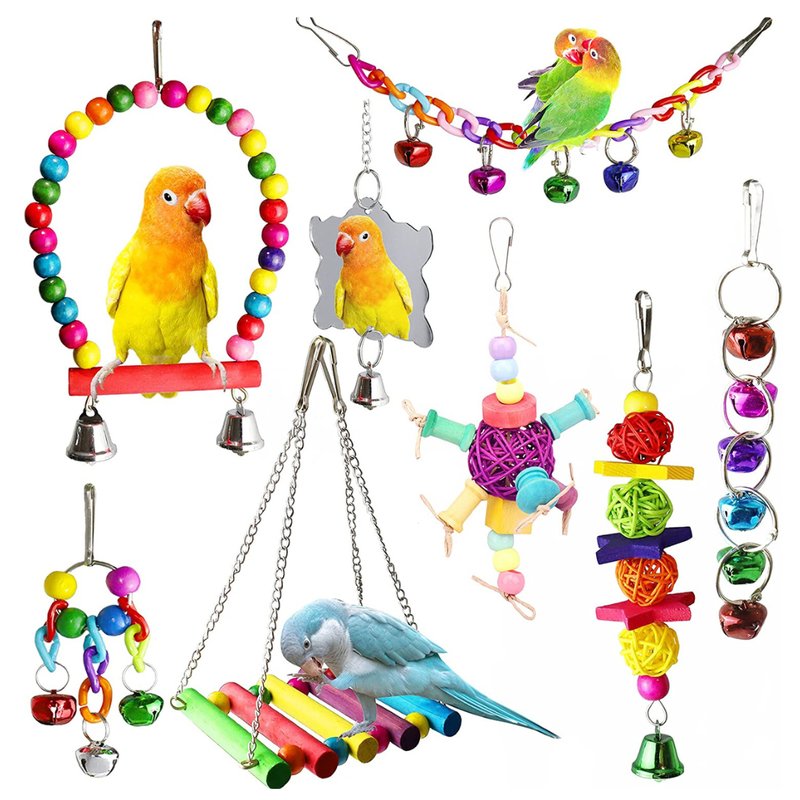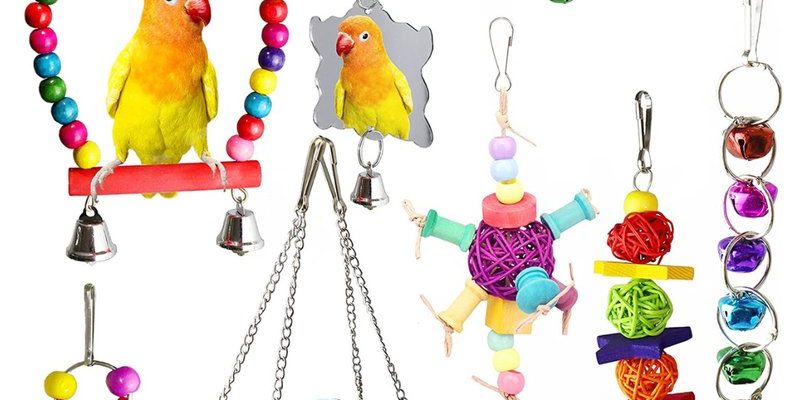
You might be wondering what kind of toys and activities will best suit your lovebird. From swinging ropes to interactive puzzles, the choices are endless. Choosing the right toys is about understanding what your lovebird enjoys and what will keep them stimulated without causing boredom or frustration. Let’s explore some of the top options for enrichment that will ensure your lovebird leads a cheerful and fulfilling life.
Understanding Lovebird Behavior and Needs
Lovebirds are very social, intelligent creatures that thrive in a stimulating environment. They have strong personalities and are known for their playful nature. Without enough mental and physical stimulation, they can become bored, which might lead to unwanted behaviors like excessive screaming or feather plucking.
To keep your lovebird happy, you should aim to mimic their natural behaviors. In the wild, lovebirds are often seen foraging for food, playing with each other, and interacting with their surroundings. Replicating these activities at home will help them feel more at ease and engaged. Think of their cage as a mini jungle, where each toy and feature serves to enhance their natural instincts.
Here’s the thing: every lovebird is unique. While some may prefer swinging and climbing, others might get more excited about solving puzzles. Observing your lovebird is the first step towards better understanding what they like and need in their environment.
Essential Toys for Lovebirds
Choosing the right toys is crucial for a lovebird’s well-being. Here are some essential types of toys that will keep your feathered friend entertained:
- Chew Toys: Lovebirds love to chew! Providing wooden blocks, rawhide, or natural fibers helps satisfy their chewing instincts and keeps their beaks healthy.
- Foraging Toys: These toys encourage your lovebird to search for treats hidden inside. It mimics their natural foraging behavior and keeps their minds sharp.
- Swings and Perches: Swings provide a fun way for lovebirds to play and move. Perches of different shapes and sizes also encourage climbing, which is essential for exercise.
- Interactive Toys: Look for toys that move or make sounds. These can capture your lovebird’s attention and provide mental stimulation.
Investing in a variety of these toys will create an engaging environment for your lovebird. Keep in mind that they can get bored with the same toys, so rotating them regularly can enhance their experience.
Safe Materials for Lovebird Toys
When selecting toys, safety is paramount. Not all toys are created equal, and some materials can be harmful to your lovebird. Here’s what to look for:
– Natural Wood: Toys made from untreated, safe woods like pine or balsa are great options as lovebirds enjoy chewing them.
– Non-Toxic Plastics: Some plastic toys are safe but always check if they are specifically labeled as bird-friendly.
– Cotton and Natural Fibers: Ropes made from natural cotton or sisal offer a safe climbing option and a good texture for chewing.
On the flip side, avoid toys with small parts that could pose a choking hazard or those made from unknown materials. Always prioritize your lovebird’s safety by researching any new toy before introducing it into their cage.
Enrichment Activities for Lovebirds
Toys are essential, but enrichment goes beyond just playthings. Activities that engage your lovebird can significantly improve their mental health. Here are a few ideas to try:
– Interactive Training: Spend some time teaching your lovebird simple tricks. Positive reinforcement can build a bond and keep their mind active.
– Foraging Challenges: Hide small treats around their cage or use treat-dispensing toys. This encourages natural foraging behavior and keeps them busy.
– Outdoor Time: If safe, allow your lovebird to explore outside in a secure area. Fresh air and new sights can be very enriching.
These activities can provide great joy for you and your lovebird. Just remember to supervise and ensure a safe environment.
Setting Up a Stimulating Cage Environment
Your lovebird’s cage should be a vibrant and stimulating space. Think about how you would arrange your living room—everything should be cozy and functional. Here are some tips to set up a bird-friendly habitat:
1. Variety of Perches: Use perches of different materials and widths. This promotes foot health and gives your bird options for comfort.
2. Toys at Different Heights: Hang toys at various levels. This encourages climbing and playing, making full use of vertical space.
3. Safe Hiding Spots: Incorporate small shelters or hiding spots. Lovebirds often enjoy snuggling away for a bit of peace.
4. Keep it Clean: Regularly clean the cage and remove any soiled toys to maintain a healthy environment.
A well-arranged cage can keep your lovebird engaged and happy, almost like a well-designed playroom.
Monitoring Your Lovebird’s Response
Once you’ve set up toys and activities, it’s essential to monitor how your lovebird interacts with them. Each bird has its own personality, and observing their behavior can help you fine-tune their enrichment.
– Watch for Boredom Signs: If you notice your bird spending excessive time alone or ignoring toys, it might be time to change things up.
– Celebrate Their Interests: If your lovebird loves a specific toy, consider adding more similar items to their collection.
– Adjust as Needed: Don’t be afraid to experiment. Some toys or activities might not resonate with your bird as you expected.
A bit of observation can go a long way in creating an environment that truly resonates with your lovebird.
Final Thoughts on Lovebird Enrichment
Fostering a stimulating and supportive environment for lovebirds is essential to their well-being. With the right toys and enrichment, you’re setting your feathered friend up for a happy, healthy life. Remember, it’s all about balance. Too many toys can overwhelm them, while too few can lead to boredom.
Creating a joyful setting requires a bit of creativity and attention, but the rewards—like joyful chirps and lively antics—are worth the effort. So, take the time to experiment, learn what your lovebird loves, and make their life as vibrant and fulfilling as possible. After all, a happy lovebird means happy owners too!

